I discovered this unusual fungus on a rotting hazel branch while clearing an overgrown corner near the garden shed. Is it a Cobalt Crust fungus and how common is it?
Felim Burke, Co Galway
Kiran Connolly the mycologist had this to say about it. ‘This is Terana caerulea also known as Pulcherricium caeruleum – Cobalt Crust Fungus. A striking resupinate bright blue, annual corticoid fungus with a white margin. It occurs in damp locations on deciduous wood – often on decaying ash branches, rather than hazel as in the image’. The National Biodiversity Data Centre has three records for it – but none are in Co Galway.
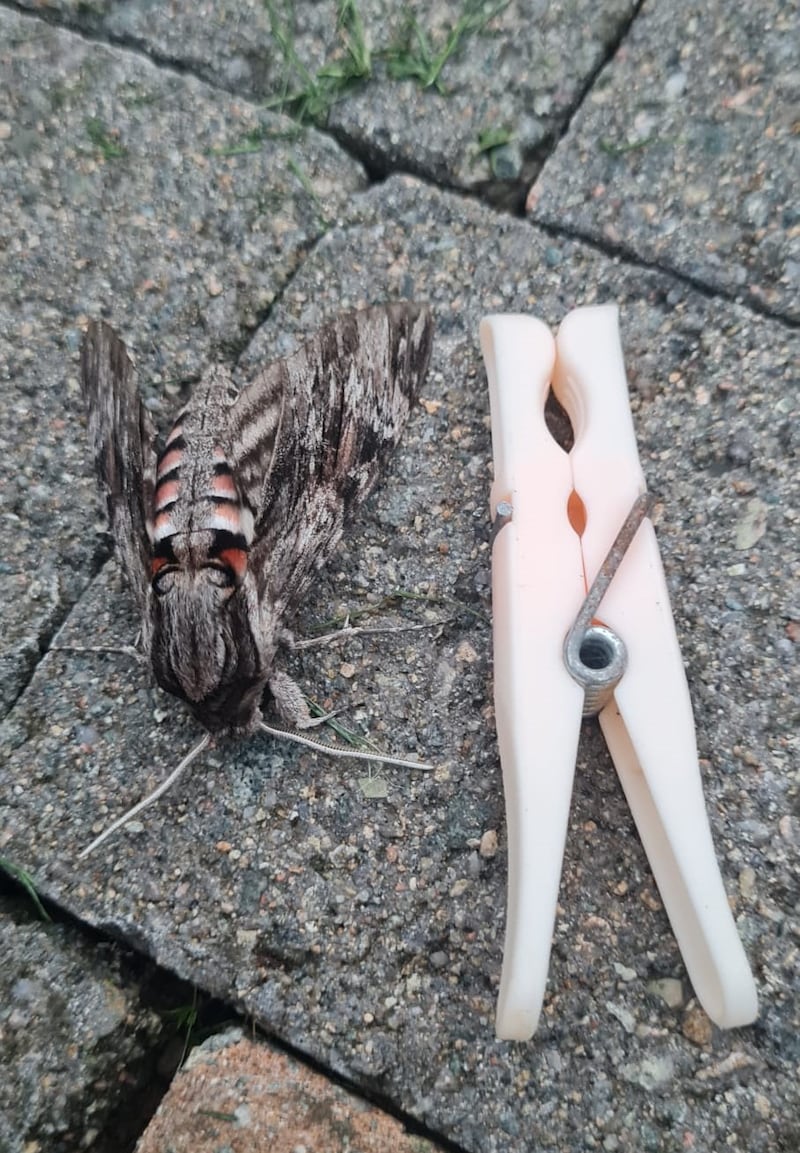
Am I right to say that this distinctive-looking creature is a hummingbird moth? I have never seen one before. Its solid trunk, flapping wings and buzzing sound tumbled out of our laundry on the washing line on September 30th.
Anna McKeown, Co Dublin
You’re not. It is the equally impressive Convolvulus hawkmoth. The sound is caused by the speed of the flapping wings. It is a migrant moth, spreading north from Africa during the summer months but doesn’t survive the winter here. It feeds on nectar from honeysuckle with its extraordinarily long tongue. The smell of your detergent must have fooled it.
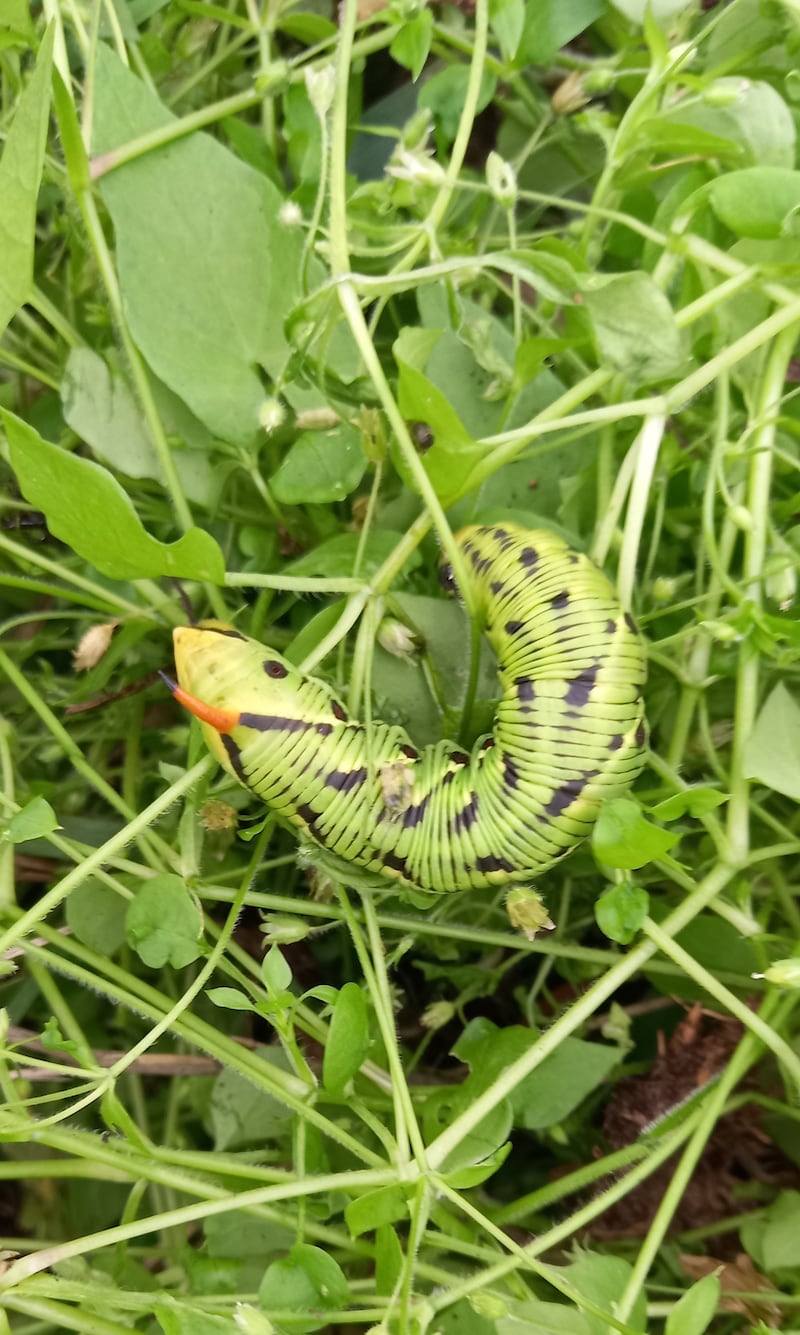
I found this large caterpillar amongst basil plants in a north-facing unheated tunnel in my garden. I assume it’s a moth caterpillar and have searched online pages but can’t identify it. The orange/red fin is at the back as it propels itself forward from the other end.
Jean Perry, Co Cork
This is the apple-green form of the caterpillar of the above-mentioned Convolvulus hawkmoth. Although a migrant from warmer climes, it breeds here all summer long. It normally feeds on bindweed rather than basil.
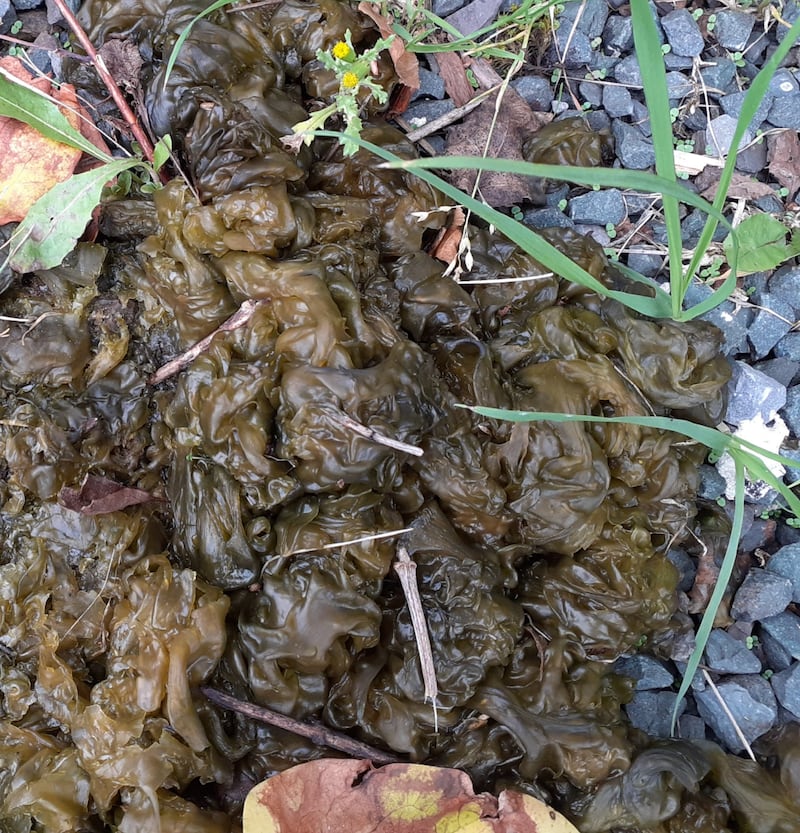
What is this? It looks like soggy, slimy seaweed! It has spread through moss and small weeds outside our front wall, this area is prone to flooding after heavy rain. How do I get rid of it? It is (alien) unsightly.
Olivia McCarthy, Co Sligo
Are only good-looking things allowed to exist? This is Nostoc commune, a terrestrial blue-green alga that is often mistaken for a seaweed. It can suddenly appear after rain, seemingly from nowhere, on paths, and sometimes in poorly-growing lawns. This gave rise to an early belief that it was material from shooting stars that had fallen to earth, hence the English name Star Jelly. Improved drainage of the area where it occurs might help as there seems to be no end to heavy rain.
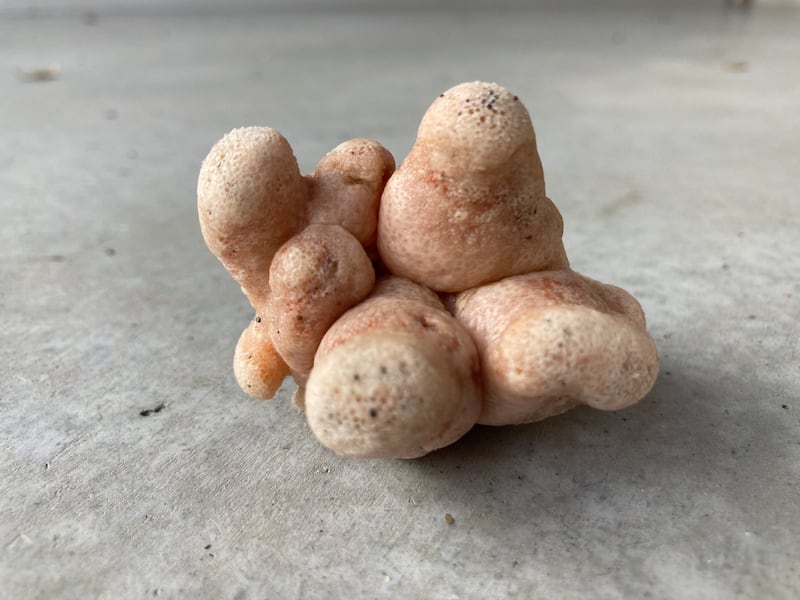
I found this on Killiney beach and was wondering what it was. It is a living thing and is about 15cm in size.
Yvanna Greene, Dublin
It is a piece of soft coral that rejoices in the name Dead Man’s Fingers on account of its apparent resemblance to soft bloated fingers. Each ‘finger’ is actually a colony of hundreds of tiny white filter-feeding polyps. It occurs on structures such as shipwrecks in deeper waters, thus giving credence to its grisly name. This piece was washed up during stormy weather.
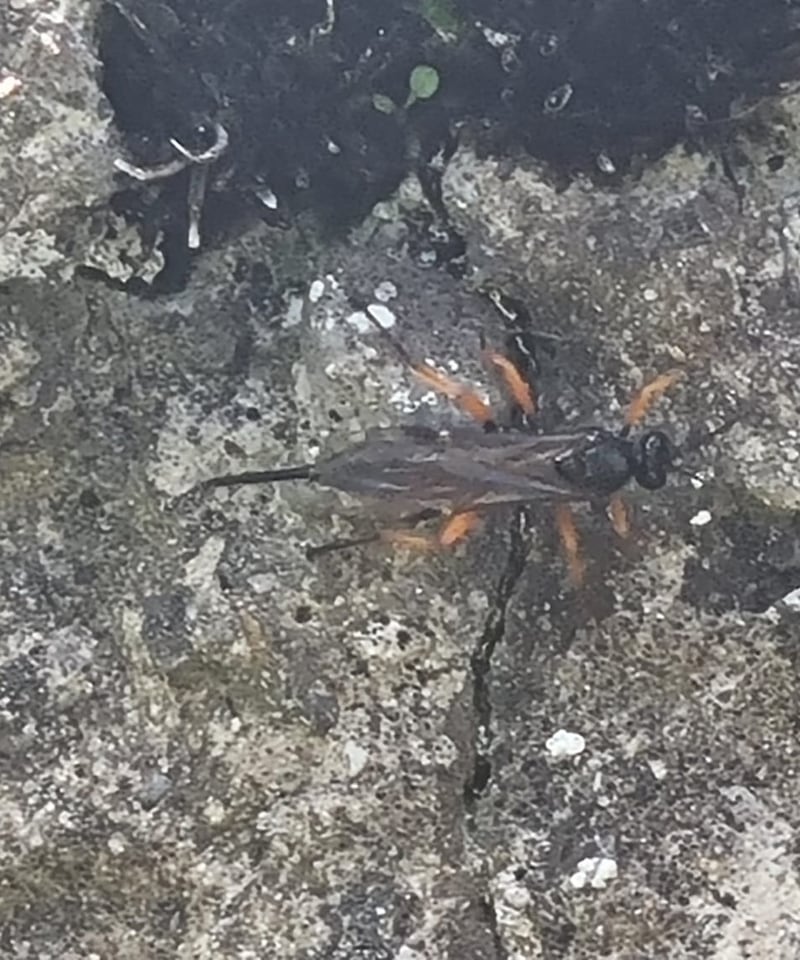
My nephew Shane spotted this strange red-legged insect on a sunny wall in his grandmother’s garden. A google search suggests it’s a ‘slip wasp’ - whatever that is. Is it something that you’d expect to find in North Mayo on a sunny October day?
Aideen Loftus, Co Mayo
Why not? It is Pimpla rufipes an ichneumon wasp that parasitizes the caterpillars of butterflies and moths, inserting the eggs through the long ovipositor at its backend. I am sure it is as partial to the cabbage white caterpillars of Mayo as those of anywhere else. It is completely harmless to humans.
Please submit your nature query, observation, or photo with a location, via irishtimes.com/eyeonnature




